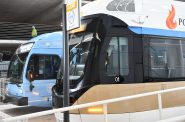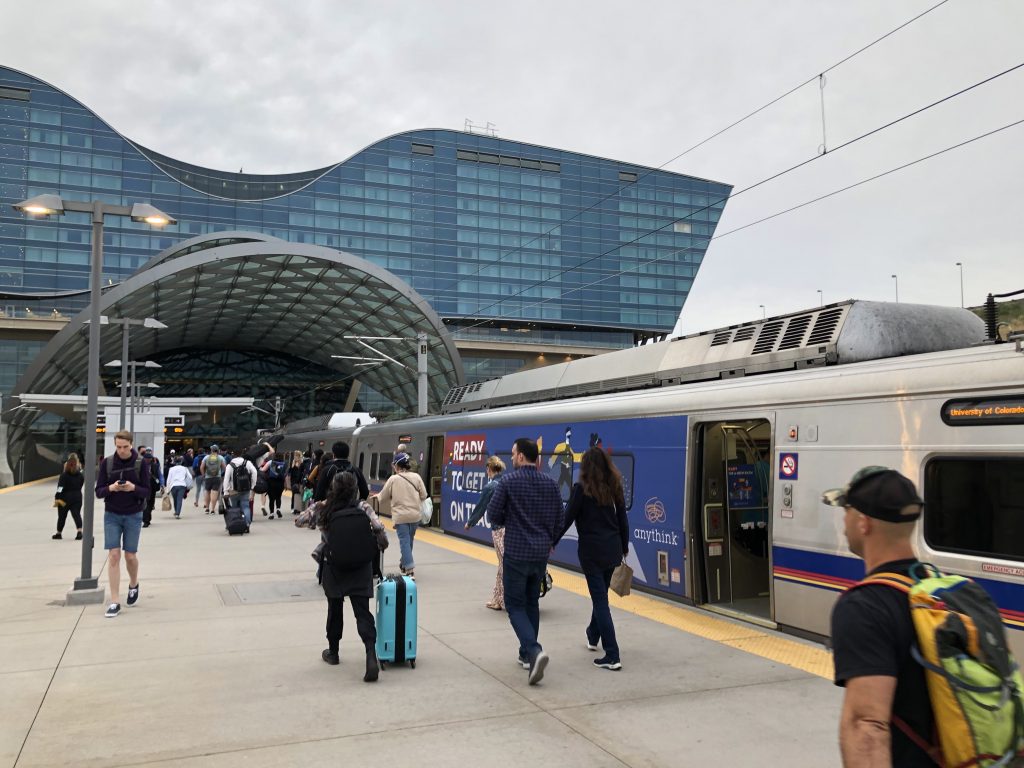Milwaukee Leaders Can Pave the Way for Regional Rail
Local governments can support private commuter rail project without breaking the bank
Recently, it seems like Milwaukee has become the home of the bold and visionary. Home to proposals to tear down freeways, build taller and taller mass-timber skyscrapers, and a mayor with dreams of nearly doubling the city’s population, it should come at no surprise that community members see a different future for our city’s transportation system, too.
As reported this week, a group of private investors want to leverage our existing network of railroads to introduce state-of-the-art regional rail service capable of transporting Milwaukeeans between the airport, downtown, Century City, and, eventually, farther into the city’s north, west, and south sides. This would be a level of public transit service not seen in the region since the early 1900s when streetcars, interurbans, and intercity trains sailed between neighborhoods.
There are many levers local government can manipulate to support this project without diving into the coffers too far. The first, streamlining the development process, is already in progress as Milwaukee updates its zoning code. The City should proactively rezone along these corridors to reflect their future high-capacity transit service. This will allow buildings with the density needed to support transit and at the same time allow more people to live and work car-free near this network.
The second tool can help address a lack of demand for development on the northwest side in the Century City area. The City and County both administer the doling out of millions of dollars of federal money each year in the form of Community Development Block Grants. These two bodies of government can follow the policy goals of their elected officials and target their allocation strategies to support affordable housing, public services, and economic development initiatives based along this corridor.
Lastly, this project should be taking advantage of tax-credits made available to try out new propulsion technology such as hydrogen. With the Hydrogen Hubs program ramping up throughout the U.S. and suppliers looking for institutional buyers, new hydrogen-powered trains could potentially be subsidized due to the novel nature of its use within a brand-new system. Introducing alternative fuels would also mean that routes within this system would not need new overhead electric wires to achieve snappy acceleration. Finally, the use of hydrogen-powered locomotives would mean no additional diesel fumes would be exhausted in historically disadvantaged neighborhoods along these routes.
This project would impact hundreds of thousands of residents in the Milwaukee area, connecting them to jobs at the medical complex, entertainment in downtown, travel at the intermodal station and airport, and affordable housing and economic development opportunities on the northwest side. However, a privately-led transit project will be an uphill battle, so it’s crucial that local leaders get behind this push and use any and all tools they have at their disposal to clear the way for it.
Michael Dunst and Sidney Kuesters are professional transportation planners with Masters degrees in city planning from the University of Pennsylvania. They have experience in rail projects, public policy analysis, and real estate development. Michael Dunst is a native of the Milwaukee area. Opinions expressed do not express the views or opinions of their employers.
If you think stories like this are important, become a member of Urban Milwaukee and help support real, independent journalism. Plus you get some cool added benefits.
Op-Ed
-
Wisconsin Candidates Decry Money in Politics, Plan to Raise Tons of It
 Dec 15th, 2025 by Ruth Conniff
Dec 15th, 2025 by Ruth Conniff
-
Trump Left Contraceptives to Rot; Women Pay the Price
 Dec 8th, 2025 by Dr. Shefaali Sharma
Dec 8th, 2025 by Dr. Shefaali Sharma
-
Why the Common Council’s Amended Budget is Good Policy for Milwaukee
 Nov 20th, 2025 by Alds. Marina Dimitrijevic and Russell W. Stamper, II
Nov 20th, 2025 by Alds. Marina Dimitrijevic and Russell W. Stamper, II
Transportation
-
Congestion Pricing Cuts Air Pollution in New York City
 Dec 14th, 2025 by Jeff Wood
Dec 14th, 2025 by Jeff Wood
-
FTA Tells Milwaukee to Crack Down on Fare Evasion — Even Where Fares Don’t Exist
 Dec 12th, 2025 by Graham Kilmer
Dec 12th, 2025 by Graham Kilmer
-
Will GOGO’s Bus Service Ever Get Going?
 Dec 9th, 2025 by Jeramey Jannene
Dec 9th, 2025 by Jeramey Jannene




















